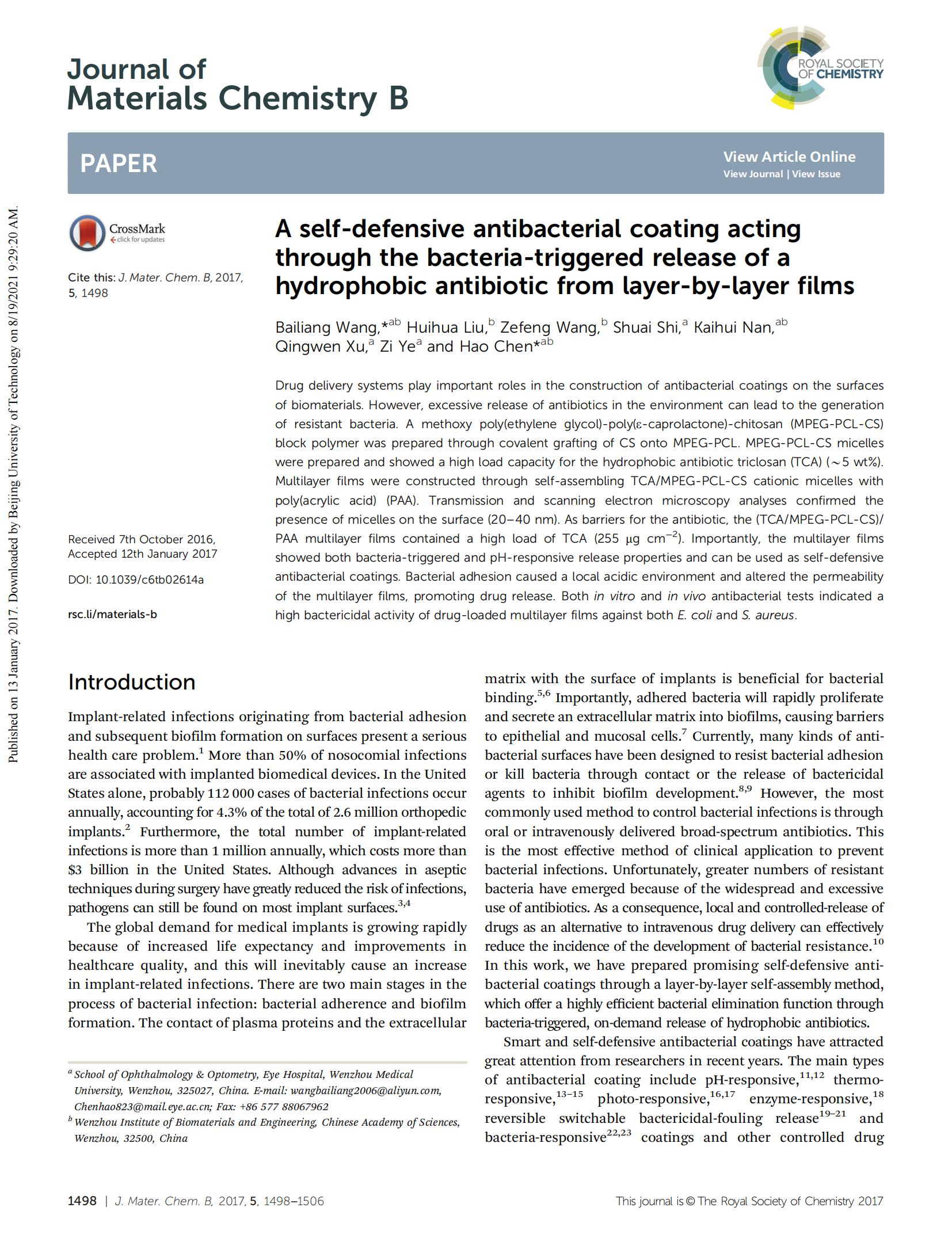Drug delivery systems play important roles in the construction of antibacterial coatings on the surfaces of biomaterials. However, excessive release of antibiotics in the environment can lead to the generation of resistant bacteria. A methoxy poly(ethylene glycol)-poly(ε-caprolactone)-chitosan (MPEG-PCL-CS) block polymer was prepared through covalent grafting of CS onto MPEG-PCL. MPEG-PCL-CS micelles were prepared and showed a high load capacity for the hydrophobic antibiotic triclosan (TCA) (∼5 wt%). Multilayer films were constructed through self-assembling TCA/MPEG-PCL-CS cationic micelles with poly(acrylic acid) (PAA). Transmission and scanning electron microscopy analyses confirmed the presence of micelles on the surface (20–40 nm). As barriers for the antibiotic, the (TCA/MPEG-PCL-CS)/PAA multilayer films contained a high load of TCA (255 μg cm−2). Importantly, the multilayer films showed both bacteria-triggered and pH-responsive release properties and can be used as self-defensive antibacterial coatings. Bacterial adhesion caused a local acidic environment and altered the permeability of the multilayer films, promoting drug release. Both in vitro and in vivo antibacterial tests indicated a high bactericidal activity of drug-loaded multilayer films against both E. coli and S. aureus.
